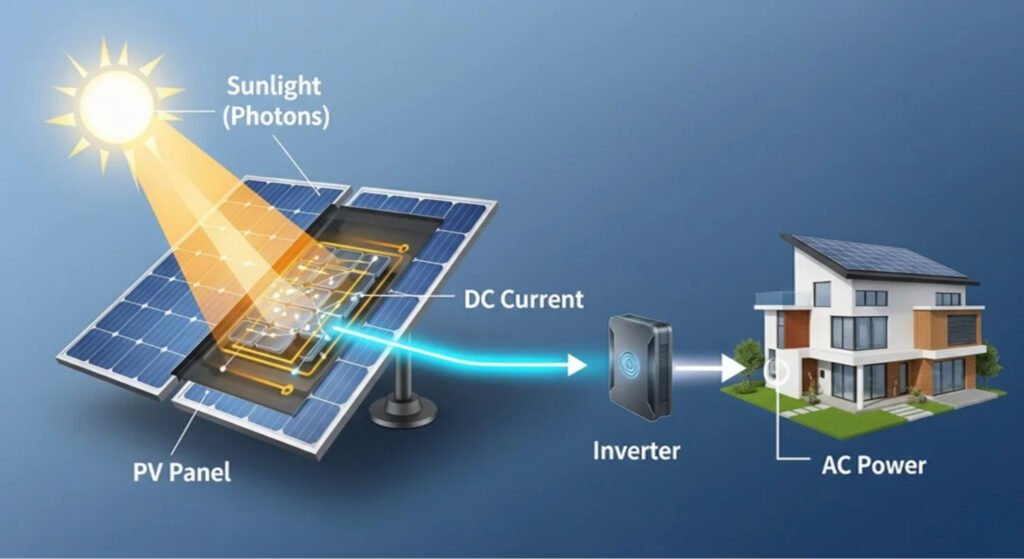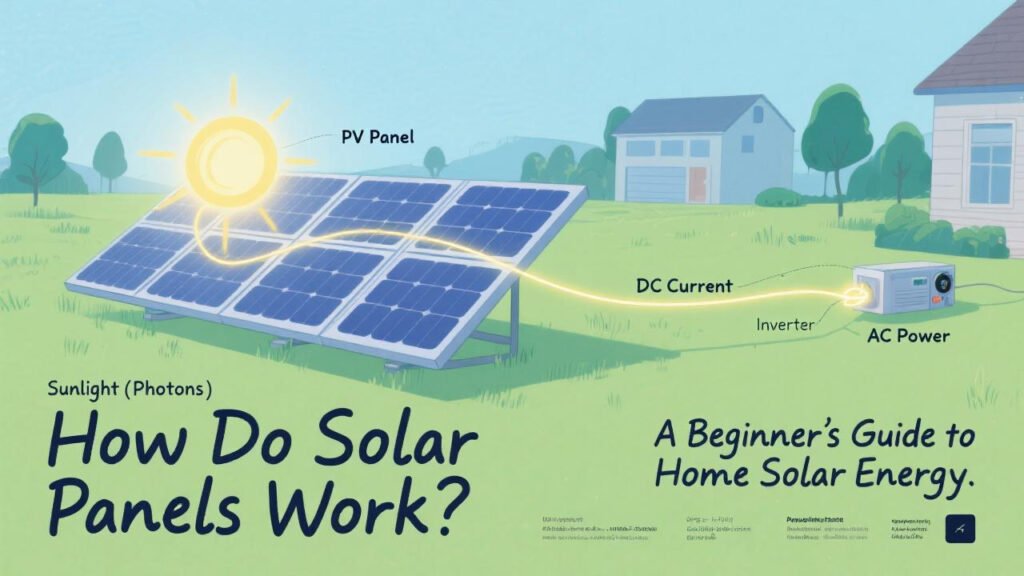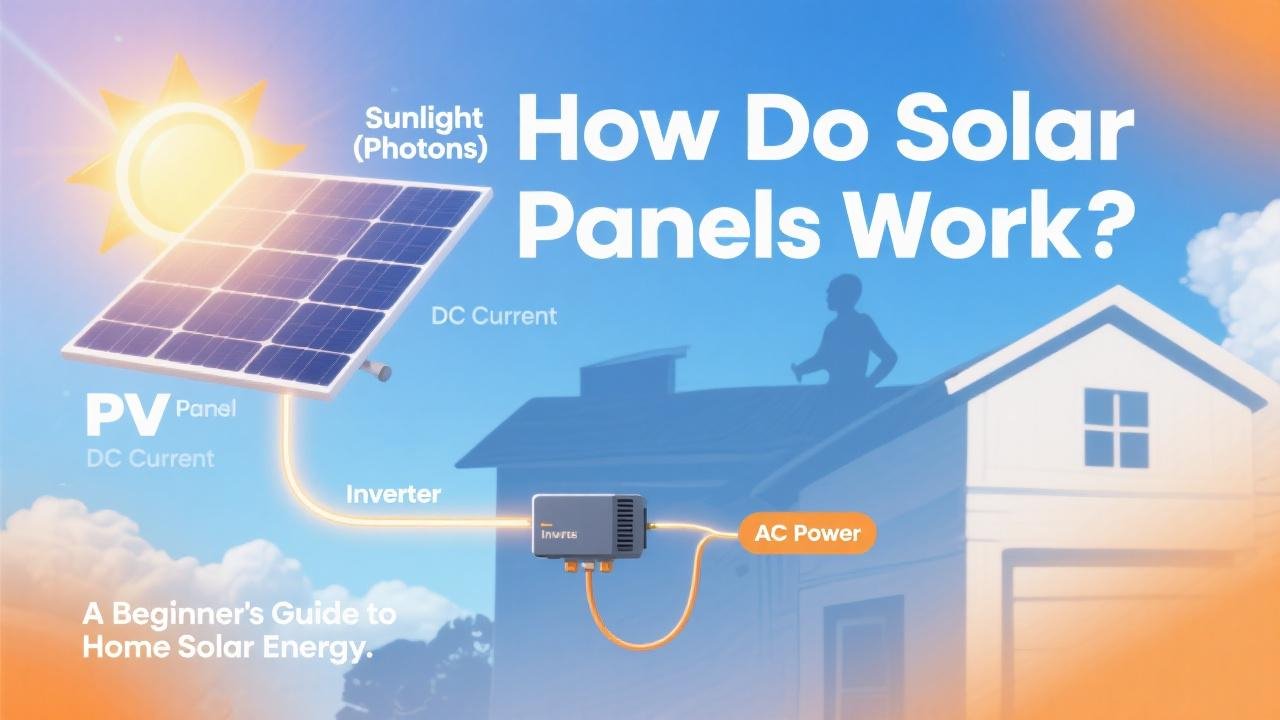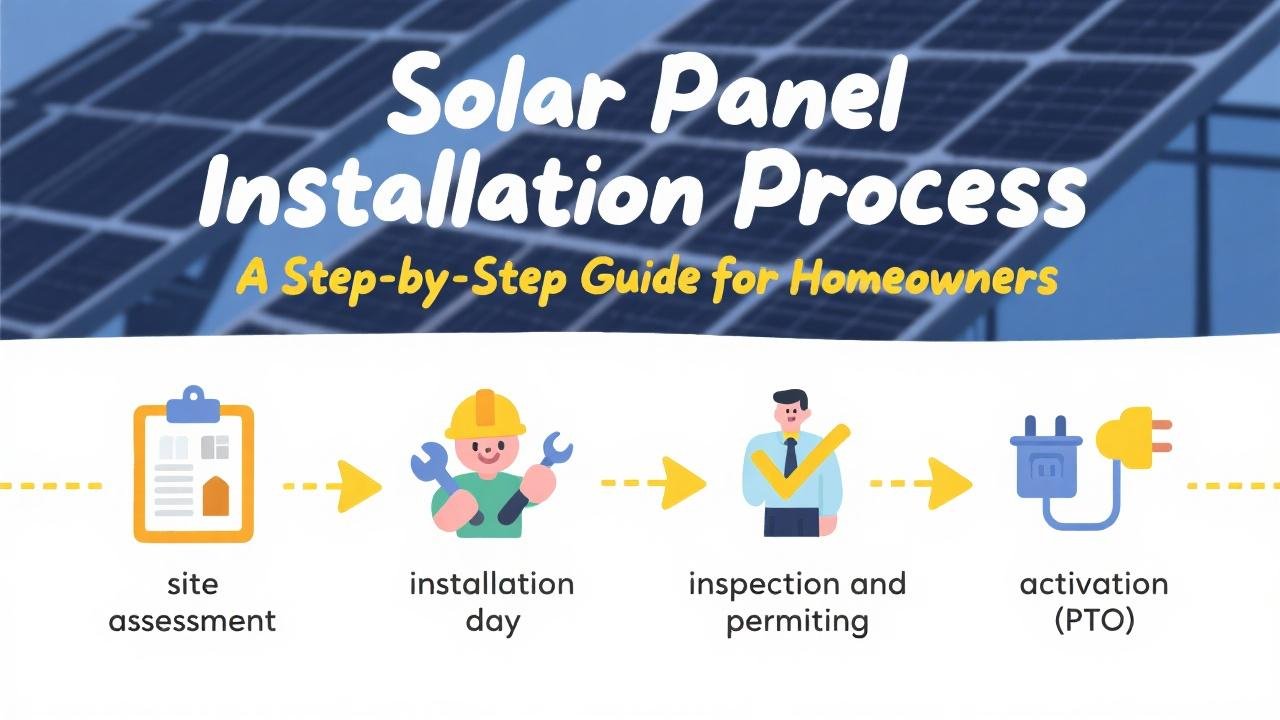Introduction: Unveiling the Magic Behind Solar Power
Solar power is a phrase we hear with increasing frequency, promising a cleaner, more sustainable energy future and potential savings on electricity bills. But how exactly do those sleek panels on a rooftop convert simple sunlight into usable electricity for your home? If you’re a homeowner curious about making the switch to solar, understanding the fundamental principles behind this technology is the first step. This guide will demystify the process, explaining in simple terms how solar panels work to power your home.
The Heart of the System: Photovoltaic (PV) Cells
The magic of solar energy begins with photovoltaic (PV) cells, the building blocks of solar panels.The term “photovoltaic” comes from “photo,” meaning light, and “voltaic,” relating to electricity. These cells are typically made from semiconductor materials, most commonly silicon. Silicon is used because it has special properties that allow it to absorb sunlight and convert it into electricity.
There are primarily two types of silicon PV cells used in residential solar panels:
- Monocrystalline Silicon Cells: Made from a single, pure crystal of silicon, these cells are generally the most efficient and have a uniform dark appearance. They tend to be slightly more expensive but perform better in lower light conditions and have a longer lifespan.
- Polycrystalline Silicon Cells: Made by melting multiple silicon fragments together, these cells have a speckled blue appearance. They are typically less expensive to produce than monocrystalline cells but are also slightly less efficient.
Regardless of the type, when sunlight strikes these semiconductor cells, an amazing process called the photovoltaic effect takes place.

The Photovoltaic Effect: Turning Sunlight into Electricity
- Sunlight Hits the Panel: Solar panels are installed in a location that maximizes sun exposure, usually a rooftop. Each panel contains many PV cells.
- Absorption of Photons: Sunlight is composed of tiny particles of energy called photons. When these photons strike a PV cell, they transfer their energy to the atoms within the semiconductor material (silicon).
- Electrons Get Excited: This absorbed energy excites electrons within the silicon atoms, causing them to break free from their atomic bonds.
- Creating an Electric Current: PV cells are designed with both a positive and a negative layer, creating an electric field. When electrons are knocked loose, this electric field forces them to flow in a specific direction. This flow of electrons is what we know as an electric current – specifically, Direct Current (DC) electricity.
Think of it like a gentle nudge: the sunlight (photons) nudges the electrons, and the structure of the PV cell guides these nudged electrons into an organized flow.
From DC to AC: Making Solar Power Usable in Your Home
The electricity generated by solar panels is DC electricity. However, most homes and appliances run on Alternating Current (AC) electricity. This is where another crucial component of your solar system comes into play: the inverter.
- The Role of the Inverter: The DC electricity produced by your solar panels flows to an inverter. The inverter’s job is to convert this DC electricity into AC electricity that is compatible with your home’s electrical system and the utility grid.
- Types of Inverters: There are several types of inverters, including string inverters (which connect a series of panels), microinverters (one per panel, optimizing individual panel performance), and power optimizers (a hybrid approach). Your solar installer, like those vetted through the EnergySage marketplace, can help determine the best type for your specific needs.
Once converted to AC, the electricity is ready to power your lights, appliances, and everything else in your home.
How Your Home Uses Solar Energy (and What Happens to Excess Power)
- Powering Your Home: The AC electricity from the inverter first goes to your home’s electrical panel (breaker box). From there, it’s distributed to the various circuits in your house, powering your devices just like grid electricity would.
- Net Metering and Excess Energy: Often, especially during sunny days, your solar panels might produce more electricity than your home is currently using. This excess energy isn’t wasted. Thanks to a system called net metering (available in many areas), this surplus power is sent back to the utility grid.Your utility meter will essentially run backward (or digitally track the export), and you’ll receive credits on your electricity bill for the energy you’ve contributed.
- Drawing from the Grid: At night, or on very cloudy days when your solar panels aren’t producing enough power, your home will automatically draw electricity from the utility grid as usual. The credits you’ve accumulated from sending excess power to the grid can help offset the cost of this grid-supplied electricity.
Platforms like EnergySage provide excellent resources to understand net metering policies in your specific area and how they can impact your savings.

What About Battery Storage?
While not essential for a grid-tied solar system to function, home battery storage is an increasingly popular addition. Batteries, like the Tesla Powerwall or Enphase IQ Battery, allow you to store the excess solar energy your panels produce during the day instead of sending it all back to the grid. You can then use this stored energy at night, during peak electricity rate hours, or even during a power outage, providing greater energy independence and potentially further reducing your reliance on the grid.
Empowering Your Home with the Sun
Understanding how solar panels work demystifies the technology and highlights its elegance. By harnessing the photovoltaic effect, these panels convert abundant sunlight directly into usable electricity for your home. Key components like PV cells and inverters work together seamlessly to provide clean, renewable power.
As you consider transitioning to home solar energy, remember that this technology not only helps reduce your carbon footprint but can also lead to significant long-term savings on your energy bills. The journey to solar might seem complex, but resources like EnergySage are designed to simplify the process. EnergySage offers a wealth of educational materials, allows you to compare quotes from pre-screened local installers, and provides access to unbiased Energy Advisors who can answer all your questions.
Ready to explore how solar can work for your home? Visit EnergySage to get started on your path to energy independence.



